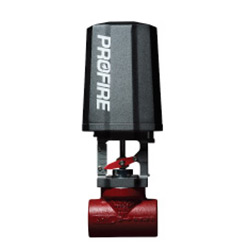- Albanian
- Arabic
- Belarusian
- Bengali
- Czech
- English
- French
- German
- Hebrew
- Hungarian
- Indonesian
- irish
- Italian
- Japanese
- kazakh
- Persian
- Russian
- Thai
- Uzbek
- Vietnamese
Exploring the Cost of an Endless Roller Coaster Experience for Adventure Seekers
The Price of Adventure Exploring the Infinity Roller Coaster
In the realm of theme parks and thrill-seeking attractions, few rides garner as much excitement and fascination as the infinity roller coaster. With their captivating designs and innovative engineering, these coasters promise an experience like no other, but at what cost? As amusement parks compete to attract visitors, understanding the pricing structure for such exhilarating rides becomes essential for both operators and thrill-seekers.
The infinity coaster is distinguished by its unique layout, where the track is designed to create a smooth, continuous loop, allowing riders to experience a sensation that feels endless. The smooth curves and dramatic drops simulate a state of weightlessness, making them incredibly popular among adrenaline junkies. However, building these extraordinary attractions requires significant investment.
Construction and Design Costs
The initial price tag for constructing an infinity roller coaster can be astronomical, often ranging from $5 million to over $20 million. This price varies depending on several factors, including the coaster's length, speed, materials used, and the complexity of its design. For example, a coaster that features advanced technology—such as magnetic propulsion or high-speed launches—requires specialized components and engineering expertise, further driving up costs.
Moreover, these projects are not merely about the ride itself. Parks must also consider the surrounding infrastructure, such as queue areas, safety mechanisms, and maintenance facilities, all contributing to the overall expense. Additionally, theme parks incur costs associated with land acquisition and permits, which can inflate the budget considerably.
Operational Costs and Maintenance
Once the infinity roller coaster is built, the financial commitment does not end there. Maintaining such a sophisticated attraction requires ongoing investment. Regular inspections, safety checks, and routine maintenance are essential to ensure that the ride operates safely and efficiently. Operators typically set aside a budget for repairs and upgrades, which can be substantial, especially if the coaster incorporates advanced technology.
infinity roller coaster price

The cost of staffing is another consideration. Trained personnel are needed to operate the ride, maintain equipment, and ensure safety protocols are followed. Given the importance of rider safety, investing in skilled staff is non-negotiable, adding to the operational overhead.
Ticket Pricing and Consumer Impact
The high costs associated with constructing and operating infinity roller coasters naturally influence ticket pricing. Amusement parks strategically price their tickets to cover expenses while still attracting visitors. A single ride on an infinity coaster can vary from $10 to $15, depending on the park's location and popularity. In some instances, parks bundle access to multiple rides within a day pass, offering visitors a better deal.
Additionally, parks may implement a variable pricing model, where peak times, such as holidays and weekends, see increased ticket prices to manage demand. This strategy allows parks to capitalize on high traffic periods while ensuring they remain lucrative.
The Value of the Experience
For thrill-seekers, the cost of admission often pales in comparison to the exhilarating experience of riding an infinity coaster. The adrenaline rush, the feeling of weightlessness, and the sheer joy of pushing the limits of gravity are priceless moments that create memories that last a lifetime.
In conclusion, while the cost of an infinity roller coaster can be steep, the unique thrills they provide justify the investment for many amusement parks. As technology advances and design becomes more innovative, such attractions will continue to redefine the landscape of thrill rides, drawing visitors eager to experience the next big thrill for an unforgettable price.
-
Flume Ride-Hebei Zhipao Amusement Equipment Manufacturing Co., Ltd.|Thrilling Water Attraction&Customizable DesignJul.30,2025
-
Flume Ride - Hebei Zhipao Amusement Equipment | Water Coaster, Thrilling DescentJul.30,2025
-
Flume Ride - Hebei Zhipao | Thrilling Water AttractionJul.30,2025
-
Flume Ride: Thrilling Water Attraction by Hebei Zhipao|Log Flume Manufacturers&Flume Ride DesignJul.30,2025
-
Flume Ride-Hebei Zhipao Amusement Equipment Manufacturing Co., Ltd.|Thrilling Water Coaster, Safe DesignJul.30,2025
-
Flume Ride-Hebei Zhipao Amusement Equipment Manufacturing Co., Ltd.|Thrilling Water Attraction, Safe DesignJul.30,2025
